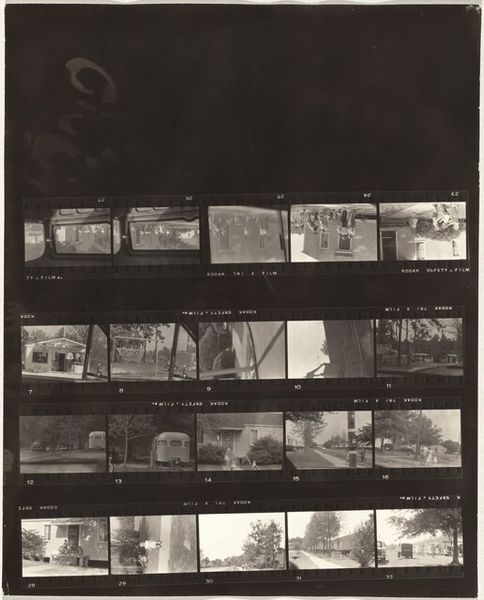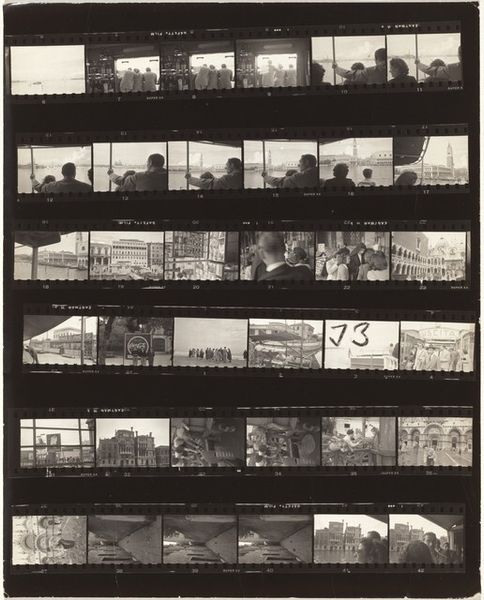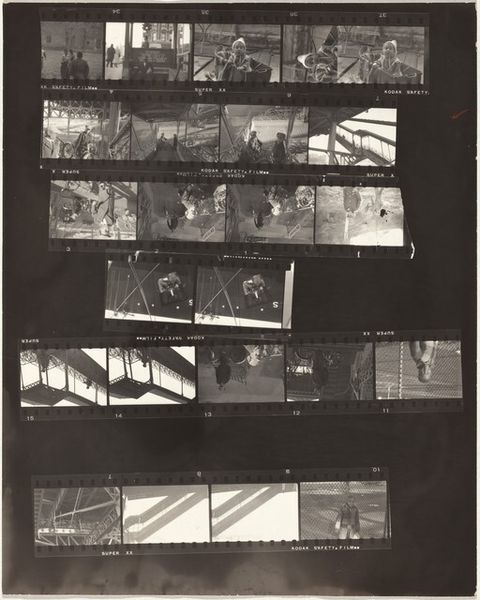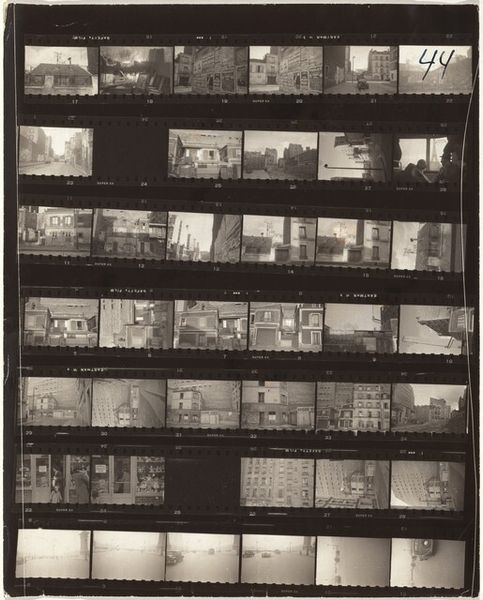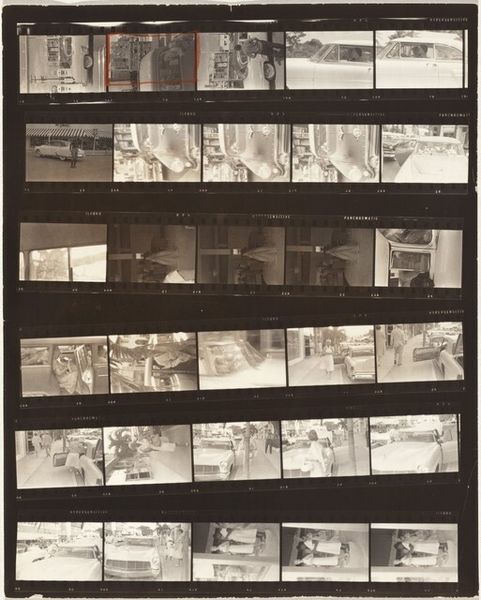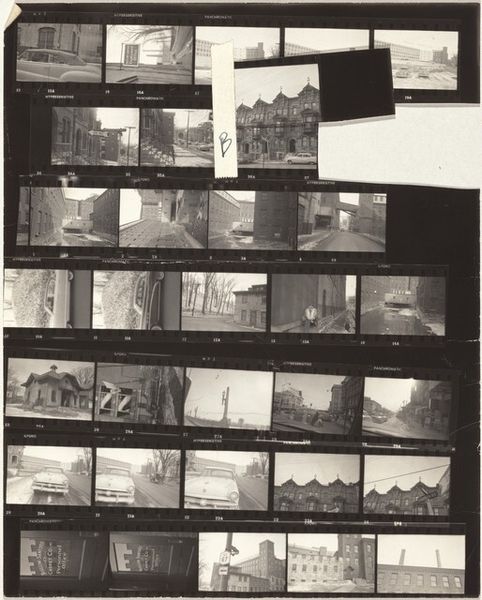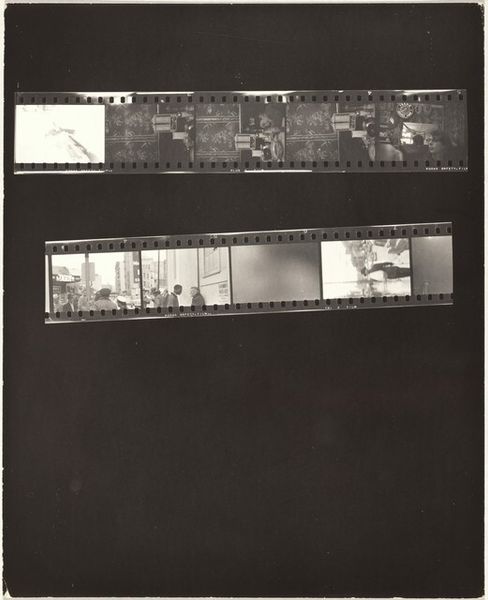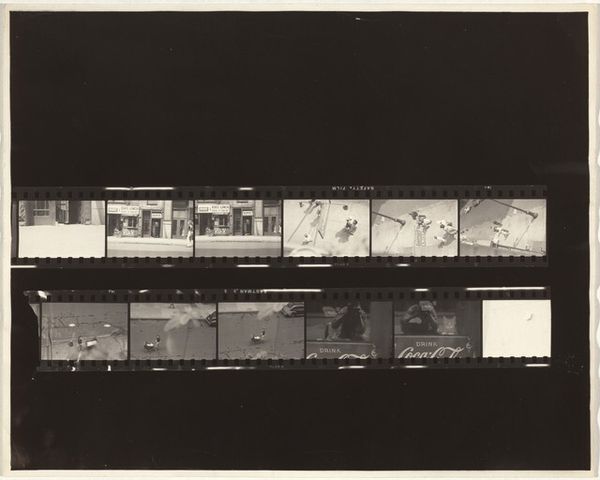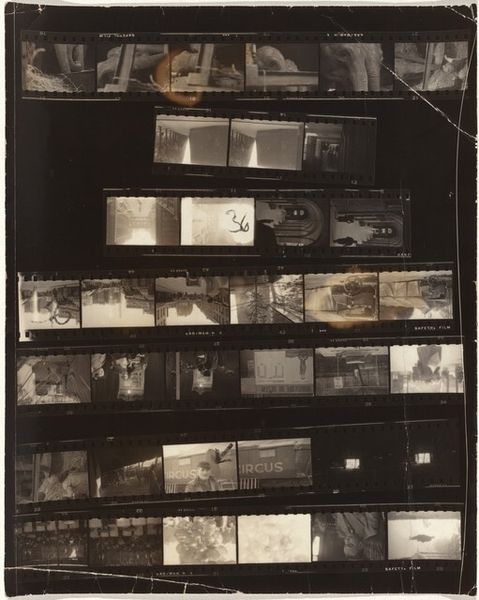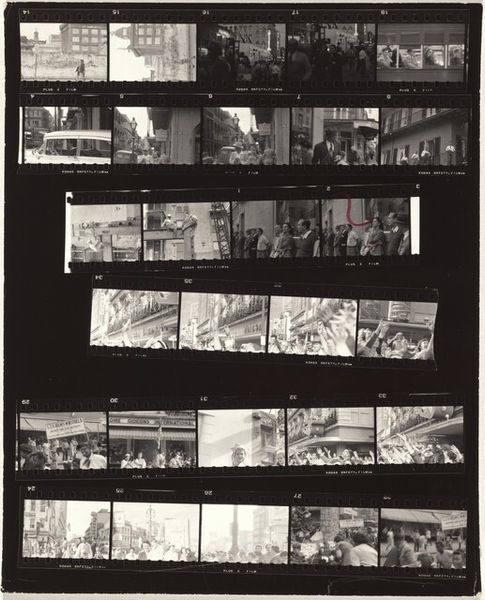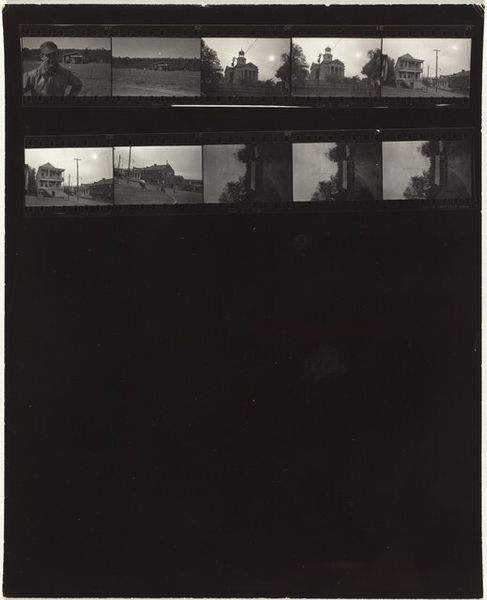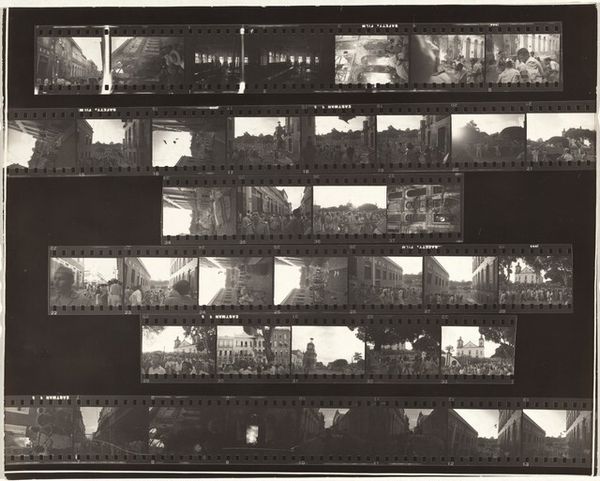
print, photography, gelatin-silver-print
#
print photography
#
film photography
# print
#
street-photography
#
photography
#
gelatin-silver-print
#
monochrome photography
#
pop-art
#
monochrome
Dimensions: overall: 25.2 x 20.2 cm (9 15/16 x 7 15/16 in.)
Copyright: National Gallery of Art: CC0 1.0
Editor: Here we have Robert Frank's "Back lot—Hollywood 73," a gelatin silver print from 1958. It’s basically the full strip of negatives, contact-printed, which is kind of cool! The bottom images almost look like ruins. What jumps out at you when you look at this? Curator: Seeing the entire negative strip really highlights the industrial and almost disposable nature of Hollywood. These aren’t precious moments carefully selected; this is the whole roll. We see the built, almost fake-looking, structures of the backlot in their raw, repetitive form. Editor: Fake-looking, definitely. I wonder why he chose to show us all the shots. Curator: Think about the societal context. 1958 was post-war America. Frank, an immigrant, captured something starkly different from the idealized image often portrayed. He presents an unvarnished, almost cynical view. Editor: So you're saying showing the whole strip reveals the illusion, the constructed nature of Hollywood, challenging that polished image? Curator: Precisely. By presenting the entire film strip, Frank democratizes the image-making process. He's letting us in on the ‘behind the scenes,’ stripping away the glamour. What impact does this have on how we view film and photography? Editor: It feels like he's questioning the authority of the photographer too, in a way. Like he's saying, “Here’s everything. You decide.” I always thought photographers were so careful in their framing. This feels different. Curator: Frank really changed the public perception of photography; moving away from rigid formalism. Looking at these strips, what do you notice about the order of the shots, are the arrangements or selection considered? Editor: Well, seeing it this way, it's more documentary, and less artistic, because we get a glimpse into how image making works behind the scenes.. Thanks, I hadn’t considered that!
Comments
No comments
Be the first to comment and join the conversation on the ultimate creative platform.

